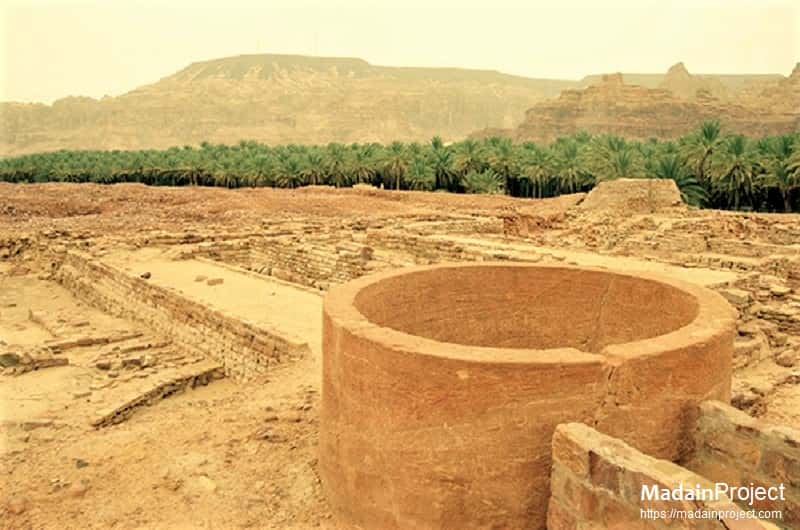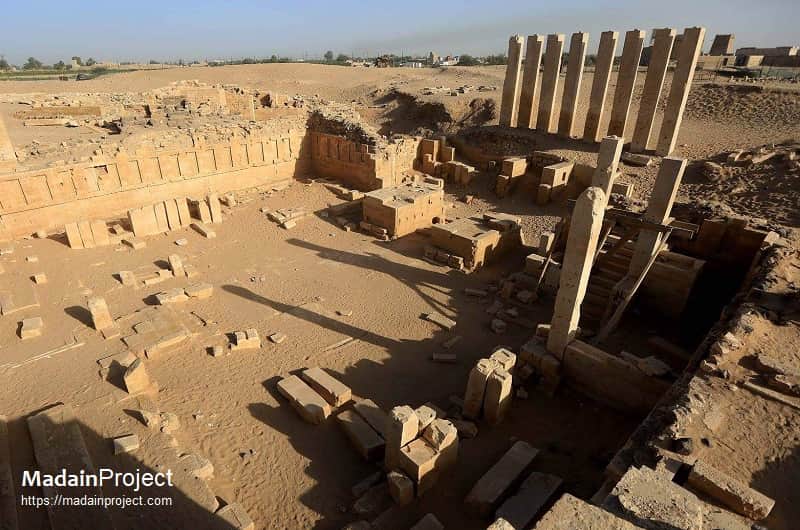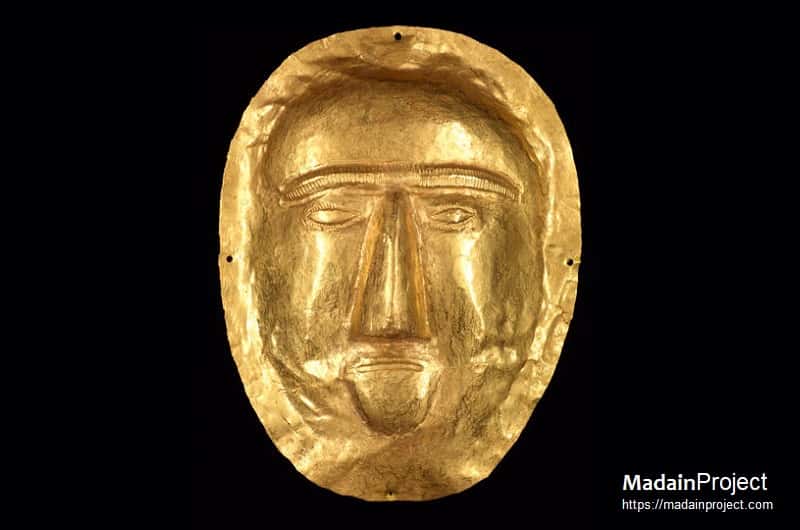Ancient Arabia or the Arabian peninsula, is a geographical region of Western Asia situated northeast of Africa on the Arabian plate. From a geographical perspective, it is considered a subcontinent of Asia. Before the modern era, it was divided into four distinct regions: Hejaz (Tihamah), Najd (al-Yamama), Southern Arabia (Hadhramaut) and Eastern Arabia. The history of the Ancient Arabia or the Arabian Peninsula goes back to the beginnings of human habitation in Arabia up to 130,000 years ago.
Ancient Arabia refers to the historical period before the rise of Islam in the 7th century CE. It was a region characterized by a diverse array of tribes, cultures, and civilizations. The earliest sedentary culture in Saudi Arabia dates back to the Ubaid period.
Prehistoric Arabia (Approximately 10,000 BCE - 1000 BCE): Early human habitation in the Arabian Peninsula traces back to the Paleolithic era when nomadic hunter-gatherers roamed its arid landscapes. The Neolithic period saw the advent of agriculture and the rise of settled communities. As the Bronze Age dawned, more advanced cultures emerged, setting the stage for the development of ancient Arabian civilizations.
Ancient Arabian Kingdoms (Approximately 1000 BCE - 600 CE) Ancient Arabia witnessed the emergence of various kingdoms and civilizations. The Kingdom of Saba, known for its wealth and trade in aromatic goods, thrived in the south. The Nabateans, with their stunning rock-cut city of Petra, controlled vital trade routes. The Lihyanites in the northwest had their own script and inscriptions, while the Kindah Kingdom in central Arabia left a debated histori
Trade and Cultural Exchange Ancient Arabia's strategic location made it a crossroads for trade between Asia, Africa, and the Mediterranean. Cities like Mecca and Yathrib (Medina) became hubs of commerce and pilgrimage, fostering the exchange of goods, ideas, and cultures that enriched the region.
Religious Practices Pre-Islamic Arabia was marked by polytheism, with tribes venerating numerous deities. The Kaaba, even before Islam, held a central religious role, housing idols representing Arabian gods and goddesses.
The Rise of Islam (7th Century CE) In the early 7th century, the Prophet Muhammad received divine revelations that gave birth to Islam. His message unified Arabian tribes, and the Hijra (migration) from Mecca to Medina in 622 CE marked the beginning of the Islamic calendar.
The Islamic Conquest (7th Century CE) Following Muhammad's passing in 632 CE, the Rashidun Caliphs embarked on a series of conquests. These campaigns expanded the Islamic empire, bringing most of the Arabian Peninsula under Islamic rule and significantly shaping the course of history in the region.

In the context of pre-Islamic Arabia the Lihyanites were a separate and distinct civilization, with a unique script, religious practices and social structures. The Lihyanite Kingdom had its own territorial boundaries, with its capital at Dedan (modern-day al-Ula, Saudi Arabia). This established them as a separate political entity. Read more

Often referred to as the Kingdom of Saba or the Kingdom of Sheba, was one of the most prominent and influential civilizations in pre-Islamic Arabia. It existed in the southern part of the Arabian Peninsula, primarily in the region of Yemen and parts of modern day Saudi Arabia, and it played a significant role in the broader context of pre-Islamic Arabian history. Read more

Dilmun was an ancient Bronze Age civilization centered in the Persian Gulf, encompassing modern-day Bahrain, eastern Saudi Arabia, and parts of Kuwait. Flourishing circa 3000 BCE to 1000 BCE, Dilmun emerged as a vital trading hub connecting Mesopotamia and the Indus Valley, facilitating the exchange of copper, pearls, dates, and luxury goods. The civilization is notable for its distinctive material culture, including monumental temples, burial mounds, pottery, and seals, as well as its prominent role in Sumerian mythology. Read more
The Ubar or Wubar, also known as the Iram of the Pillars (إرَم ذَات ٱلْعِمَاد) is a lost city, region or tribe mentioned in the Qur'an. Ubar is the subject of both legend and myth in Arabian folklore. It is said to have been a wealthy and prosperous city known for its trade, but it allegedly vanished into the desert sands due to the sinful behavior of its inhabitants. The identification of Wadi Rum with Iram and the tribe of ‘Ad, mentioned in the Quran, has been proposed by scholars who have translated Thamudic and Nabataean inscriptions referring to both the place Iram and the tribes of ‘Ad and Thamud by name.
Madain Saleh, also known as al-Hijr or Hegra, is an archaeological site located in the northwestern part of modern day Saudi Arabia. Located 22 kilometers to the north of al-Ula municipality in the Madina al-Munawara province, it was the first ever archeological site in Saudi Arabia to join the UNESCO's World Heritage List. It is often referred to as the "second Petra" due to its striking similarity to the famous archaeological site of Petra in Jordan. Madain Saleh was the southernmost settlement of the Nabateans (a nomadic Arab people), which also included Petra. One of the most prominent features of Madain Saleh is its rock-cut tombs.
The Arabian Peninsula is located in the continent of Asia. The most prominent feature of the peninsula is desert. In total seven countries constitue the Arabian Peninsula in the modern day.

Though relatively a modern state, Saudi Arabia has evidence of human habitation dating back to the Paleolithic period, with archaeological sites like the al-Kharj petroglyphs, which contain rock carvings of animals and hunting scenes. From the prehistoric settlements and the remarkable Nabatean Kingdom to the birthplace of Islam and its influence on world history, Saudi Arabia's archaeological sites and historical treasures offer a remarkable glimpse into the past. Read more

Yemen, situated in the southern part of the Arabian Peninsula, has a long and storied history dating back thousands of years. The earliest known civilization in Yemen was the Sabaean Kingdom, which emerged around the 8th century BCE. Yemen was a central hub on the Incense Route, an ancient trade network that facilitated the exchange of valuable commodities such as frankincense and myrrh. Yemen played a pivotal role in the early spread of Islam. Read more

The history and archaeology of Qatar, a small but culturally significant country on the northeastern coast of the Arabian Peninsula, reveal a diverse and ancient heritage. From the traces of prehistoric nomadic settlements to the remnants of the illustrious Dilmun civilization and the enduring influence of Islam, Qatar's archaeological treasures offer a captivating journey through time. Read more
The Roads of Arabia exhibition delves into the historical and cultural evolution of Arabia, starting from early human history. It explores ancient incense trade routes and early-Islamic pilgrimage roads that linked Arabia with regions like Iraq, Syria, Egypt, and the Mediterranean. The exhibition provides valuable insights into the cultural exchanges between Arabia and its varied neighbors. Among the intriguing findings is the al-Hamra cube, showcasing the blend of Egyptian and Mesopotamian motifs in local religious practices. Additionally, everyday items displayed reflect a fascinating amalgamation of languages and artistic styles, revealing the diverse cultural interactions in the region.

From the earliest settlements of the Dilmun civilization, dating back to the Bronze Age, to the influence of ancient Mesopotamian, Sumerian, and Assyrian cultures, Bahrain has been a cradle of civilization and a hub of trade. Its archaeological sites, which include ancient burial mounds, fortresses, and temples, tell stories of a land coveted by traders, sailors, and conquerors. Read more

Beneath the contemporary urban landscape lies a treasure trove of archaeological sites that shed light on the region's past, connecting it with the larger narrative of human civilization. Sites like Failaka Island, provide glimpses into the island's Bronze Age history, showcasing remnants of early civilizations, including the Dilmun, Greeks, and Persians. Read more

From the ancient coastal settlements along the Arabian Gulf to the inland oasis communities, archaeologists have meticulously studied the remnants of forts, tombs, and trading posts, providing valuable insights into the social, economic, and cultural aspects of ancient societies. Read more

Situated at the crossroads of ancient trade routes, Oman has been a significant hub of human activity for thousands of years. One of the remarkable aspects of archaeology in Oman is the discovery of the country's prehistoric past. Excavations in sites like Ras al-Hadd and al-Wattayah have revealed evidence of early human settlements dating back to the Stone Age. Read more

The Thājite Funerary Mask, believed to date back to the Iron Age, is a burial mask made of bronze, portraying a human face with intricate details. Its purpose was to adorn the deceased, possibly a person of significant social or religious status, during funeral ceremonies. Read more
Signup for our monthly newsletter / online magazine.
No spam, we promise.